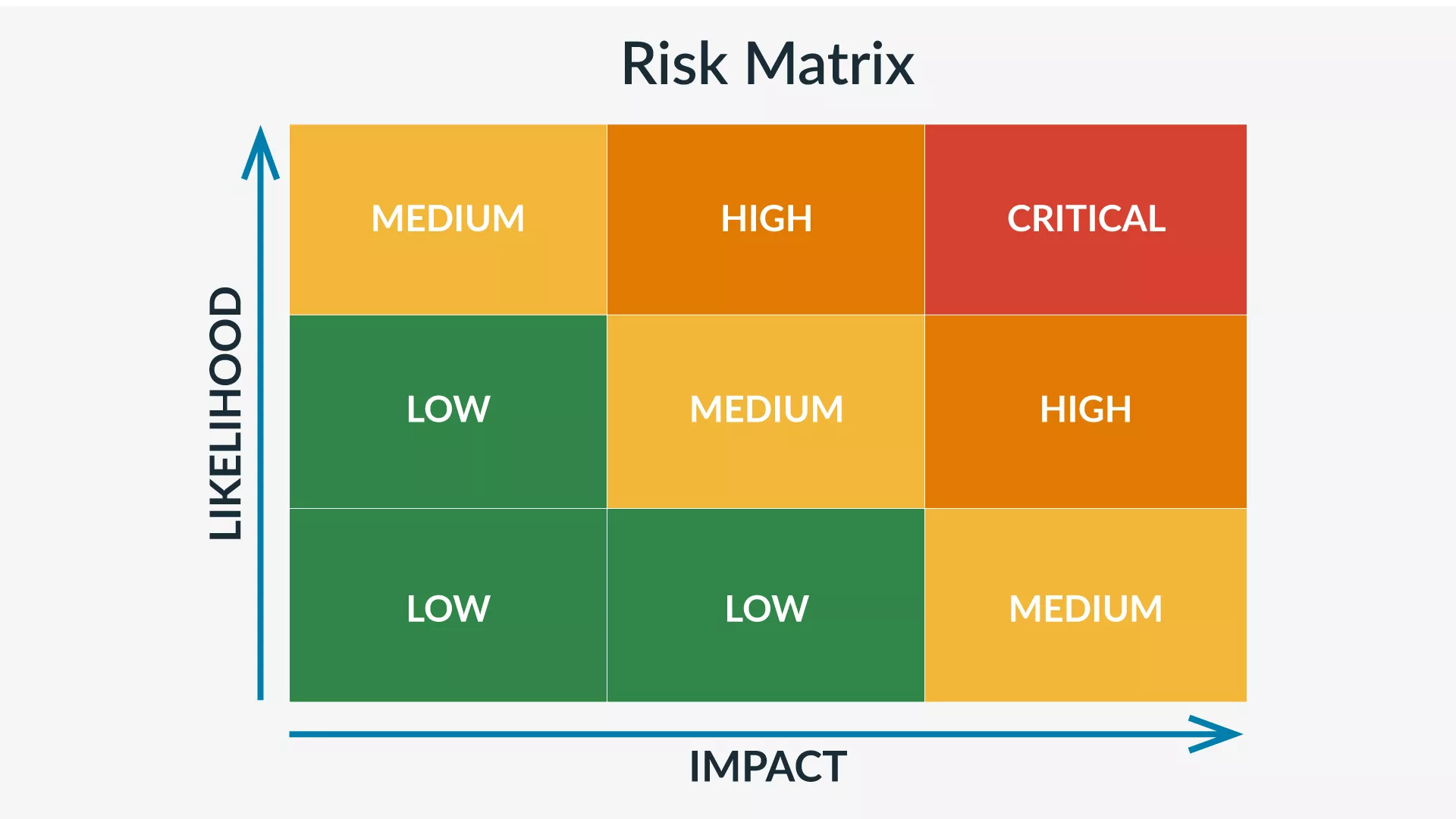Organizational resilience is your organization’s ability to survive disruption and grow. Learn how companies like Starbucks build it into daily operations to protect performance, people, and progress.

Organizational Resilience: Building Continuous Operations and Agility Amid Disruptions

For business leaders, the modern threat landscape often means unstable market conditions, fast-moving disruptions, and constant pressure to adapt. However, the challenges also push organizations to improve, clarify their purpose, and build systems that can endure more than one type of shock.
Organizational resilience allows a company to meet those demands without losing momentum. As Michelle Kubo, Senior Project Manager of Programs and Strategies at Starbucks, puts it in an interview on The Employee Safety Podcast, “It’s understanding your roadmap—where you want to go—without being too tied to specific things you need to do.” That balance between direction and flexibility is what helps businesses respond with focus, even when the situation is unclear.
To build that kind of resilience, leaders need a clear definition, a strong foundation, and a practical framework for action. In the following sections, we walk through the key elements of organizational resilience, with a few insights from Kubo and Meghan Murphy, Senior Manager of Crisis Management at Starbucks, so your organization can prepare for the many threats you may face.
Business Continuity Plan Template
How Resilience Reflects Your Organization’s Ability to Endure
Organizational resilience is the capacity to withstand disruption and adapt during sudden crises, long-term threats, or rapid change. The right plan supports continuity, speeds recovery, and improves decision-making over time.
One company that truly embodies organizational resilience management is Starbucks. With more than 33,000 stores and hundreds of thousands of employees worldwide, Starbucks has faced significant operational challenges, unexpected events, and complex global shifts. And through all of it, it has stayed aligned and steady. That doesn’t happen by just reacting well in a crisis. It happens when resilience is built into how the business runs daily.
Michelle Kubo and Meghan Murphy discussed what that looks like. Both emphasized the need to establish resilience as a capability that spans the entire organization. It’s not limited to emergency teams or leadership. Every partner, from baristas to corporate staff, must understand what resilience means in their role and how to act on it during pressure moments.
The business benefits of building organizational resilience
The advantages of organizational resilience are well-documented. Companies that prioritize resilience navigate disruption more effectively. They often turn that strength into a lasting competitive advantage, outperforming rivals in long-term performance and stability. Specifically, they enjoy:
- Accelerated recovery: Organizations with strong resilience capabilities bounce back faster from disruption. They maintain continuity, limit downtime, and regain operational footing more quickly than less-prepared peers.
- Stronger financial performance: According to McKinsey, resilient companies generated 50% higher total shareholder returns than non-resilient counterparts during and after the pandemic. This gap highlights how resilience directly translates into stronger performance when businesses face prolonged stress or uncertainty.
- Improved organizational health: McKinsey research shows that organizations with strong organizational health are 59% less likely to experience financial distress during economic shocks.
- More adaptable workplace culture: Resilience strengthens culture by encouraging adaptability, clarity, and psychological safety. This supports higher employee well-being, engagement, and retention, especially during times of change or economic downturn.
- Stronger long-term growth outlook: By embedding resilience into daily operations, organizations are better positioned to handle complexity, seize opportunities, and scale with confidence, even when conditions are unpredictable.
Core Pillars of an Organization’s Resilience
While resilience spans every part of a business, there are several core pillars or domains that resilient organizations consistently get right. Modeling your effort on theirs can help business leaders set the most effective organizational resilience framework.
| Agility | Resilient organizations act quickly and adjust plans as conditions change. |
|
| Leadership | Strong leadership and a resilient culture keep people aligned during uncertainty. |
|
| People | A prepared, supported workforce is essential for sustained performance. |
|
| Technology | Systems must withstand stress without shutting down critical operations. |
|
| Risk management | Resilience depends on anticipating problems and preparing in advance. |
|
A Resilience Roadmap for Business Leaders
For leaders looking to strengthen their organization’s resilience, the following practical steps offer a roadmap. They align with common best practices that help create a more stable and responsive work environment during disruption.
#1: Perform a comprehensive risk assessment to identify vulnerabilities
Begin by identifying the full range of risks your organization faces. These could include natural disasters, cyber threats, supply chain delays, social unrest, workforce instability, or other threats. Evaluate each risk not just for how likely it is, but also for how severely it could disrupt your operations. Using a risk matrix can help you visualize and prioritize these threats, ranking them by likelihood and impact so your team can focus where it matters most.
A strong business impact analysis (BIA) goes hand in hand with this effort. It identifies your most critical services, systems, and functions—and shows what happens when they’re interrupted.
This is where resilient companies like Starbucks stand out. Meghan Murphy described how Starbucks built a scalable framework for understanding risk across thousands of store locations and centralized functions. They identified six core focus areas that apply regardless of scale: partner safety, pay, property, product availability, communications, and community support. That structure allows them to evaluate any disruption and know immediately where to focus.
The goal of this step is the same for any organization: map out what matters most. Know which processes are essential to operational resilience, understand what other systems, teams, or vendors those processes depend on, and use tools like a risk matrix to guide your priorities. That clarity allows resilient organizations to act quickly when something goes wrong.
How-to Video: The BIA
This video will help you facilitate an effective business impact analysis at your organization.
#2: Develop and integrate crisis management and continuity plans
Once you’ve identified your most significant risks and critical services, the next step is to build plans to keep your business running during disruption. These plans should be practical, flexible, and aligned across teams. Avoid rigid, scenario-specific documents. Instead, adopt an all-hazards approach that equips your organization to respond to various emergencies using a familiar playbook.
| Crisis management plan | Business continuity plan | Disaster recovery plan |
| Defines how the organization will respond in the first minutes and hours of an incident. Includes who declares a crisis, who leads the response, and how decisions and communications are handled. | Outlines how essential business functions will continue during disruption. Covers procedures for relocating teams, shifting workflows, and prioritizing services based on their criticality. | Covers how the organization restores operations after a disruptive event, including IT failures, natural disasters, and other emergencies. Includes recovery time objectives, backup procedures, and failover protocols. |
| Emergency response plan | Communications plan | Workforce continuity plan |
| Provides step-by-step actions for keeping people safe during facility-level emergencies. Covers evacuation, shelter-in-place, lockdown procedures, safety equipment, and contacts. This is especially important in healthcare or other high-risk environments. | Details how you will communicate internally and externally during times of crisis. Identifies key spokespeople, messaging protocols, and approval workflows for employees, customers, partnerships, and regulators. | Addresses how you will support employees and maintain staffing levels. Includes remote work procedures, cross-training, and backup coverage for critical roles. |
Effective resilience planning connects all of these components. They should not live in silos. Your IT disaster recovery plan, HR staffing protocols, and business unit continuity plans should work together under a single framework that leaders can use to guide responses to a wide variety of incidents.
#3: Align leadership and organizational culture
To make resilience effective, you need both leadership commitment and a structure that supports it. That starts with executive sponsorship and clear ownership. Someone at the top must be responsible for driving the program forward. This could involve appointing a Chief Resilience Officer or giving the responsibility to an existing senior leader with the authority to coordinate across departments.
Resilience must also be embedded into the organization’s culture. Starbucks invests in training at multiple levels, including store-level employees, so people across the company know what to do when disruption hits. “The more we see leaders encouraging their teams to participate and speak,” said Meghan Murphy, “the more engaged everyone is.” Leadership-driven engagement helps build trust, reinforce coordination, and keep teams aligned under pressure.”
Building this kind of trust and coordination starts with structure. Create a standing crisis or resilience team with representatives from key departments such as IT, HR, operations, facilities, finance, and communications. This group should meet regularly, lead preparedness efforts, and guide the response when disruptions occur. That shared readiness helps teams stay aligned and focused under pressure.
#4: Use technology to manage potential threats and aid business operations
Technology can either amplify disruption or help you stay ahead of it. Resilient organizations invest in systems that make them faster, clearer, and more stable during a crisis. The right tools help detect threats early and keep your business operating under pressure.
|
|
#5: Use training and drills to improve organizational behavior
Resilience depends on regular testing and reinforcement. Start with tabletop exercises, which are structured discussions based on hypothetical scenarios. These walk-throughs help teams clarify roles, decision-making processes, and communication flow in a controlled setting. For example, you might run a tabletop exercise for a regional outage or a supply chain delay, bringing together operations, logistics, and leadership to review their response. These exercises are simple to set up and offer immediate insight into plan gaps and role confusion.
Next, introduce live simulations that involve real-time interaction and response. These can include sending a test alert through your mass communication system and confirming that staff receive and acknowledge the message. You can also simulate a server outage and test whether IT restores services within your defined recovery time. Run a cyber incident scenario to check how quickly teams can coordinate, contain the issue, and communicate with stakeholders. These simulations help validate timing, coordination, and whether the right tools and people are in place.
Full-scale drills provide the most realistic testing. These include full activation of teams, such as a facility evacuation, a backup data center switchover, or a large-scale emergency response. Involve all relevant departments and mirror the pace and uncertainty of a real crisis. Repeat these exercises regularly to build competence across the organization and improve teams’ performance under pressure.
#6: Review and improve your ability to bounce back
Resilience efforts are only as strong as what you learn from them. Every disruption, drill, or near miss should trigger an after-action review. This is a structured debrief where teams reflect on what happened, what went well, and what needs improvement. The process is essential for identifying communication breakdowns, vulnerabilities, unclear roles, or overlooked dependencies.
The insights captured in these discussions should be formalized in after-action reports. These reports serve multiple purposes: they document what was learned, assign follow-up actions, and provide a clear record of how resilience efforts evolve over time.
But reflection alone isn’t enough. To make meaningful improvements, organizations need to translate those insights into measurable data. Metrics allow you to track performance, spot trends, and demonstrate progress. By turning lessons into numbers, you create accountability—and a foundation for smarter decision-making. Here are several examples of metrics commonly used to evaluate organizational resilience.
| Metric | Formula |
| Backup System Activation Rate: Reflects readiness of backup systems | Successful backup activations / backup activation attempts |
| Corrective Action Closure Rate: Assesses follow-through on issues identified in reviews | Number of action items closed / total action items identified |
| Crisis Notification Effectiveness: Gauges communication reach during incidents | Number of employees who confirm receipt / total number of employees notified |
| Drill Participation Rate: Tracks employee engagement in preparedness | Number of employees who participated / total number of employees |
| Employee Confidence Score: Reflects staff preparedness | Average score from post-drill or preparedness surveys |
| Facility Reopen Time: Tracks operational downtime | Time facility closed to time of reopening (in hours or days) |
| Mean Time to Detect (MTTD): Tracks how quickly incidents are identified | Total time from incident start to detection / number of incidents |
| Mean Time to Respond (MTTR): Measures response speed | Total time from detection to containment / number of incidents |
| Plan Testing Coverage: Indicates how many critical functions are tested | Number of critical processes tested in last 12 months / total number of critical processes |
| Risk Mitigation Coverage: Measures how many known risks have active mitigation plans | Number of identified critical risks with mitigation plans / total critical risks identified |
| Supplier Recovery Time: Captures supply chain resilience | Time from supplier disruption to full operational recovery |
| System Recovery Time Accuracy: Measures how close actual recovery time is to the target | (Actual recovery time − target recovery time) / target recovery time |
| Training Completion Rate: Monitors training coverage | Number of employees trained / total number of employees |
Once you have results, don’t let them sit. Set a regular review schedule to spot patterns, flag weak points, and track improvements. A quarterly cadence works for many organizations. Use tools like dashboards or scorecards to make the data useful in day-to-day decisions. When problems show up, such as slow recovery times or low confidence scores, take action. Fix the root causes, not just the symptoms. That might mean adjusting your infrastructure, updating protocols, or running more targeted drills. This approach reinforces a culture of continuous problem-solving.
The goal is to keep learning and keep improving. Over time, this rhythm of measuring, reviewing, and acting helps resilience become second nature to the business model.
Following Strong Examples to Navigate Organizational Change
Organizational resilience is not a side project. It is a long-term effort that takes clear planning, routine testing, and a commitment to improvement. Starbucks puts this into practice across its entire enterprise.
Their crisis management team collaborates with operations, IT, and communications to prepare for disruptions of all kinds. They test emergency alerts, rehearse response protocols, and use structured debriefs to capture lessons from every event. Leadership stays engaged, and employees at all levels are trained to respond with confidence. This kind of integrated approach allows them to adapt quickly, protect internal teams and external stakeholders, and keep stores running even when conditions change fast.
If your organization is ready to strengthen its resilience, the best place to begin is with a clear and usable plan. Download the free business continuity plan template and take the first step toward building real organizational resilience.




![7 Business Risk Response Strategies [+Mitigation Plan]](https://www.alertmedia.com/wp-content/uploads/2024/12/Blog-2024-RiskResponseStrategies-V2.jpg)

